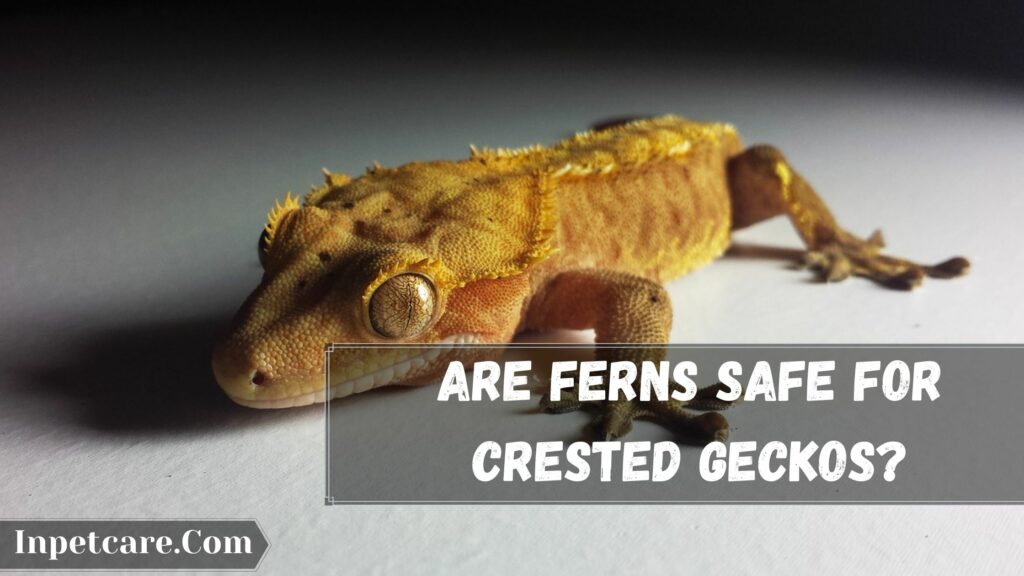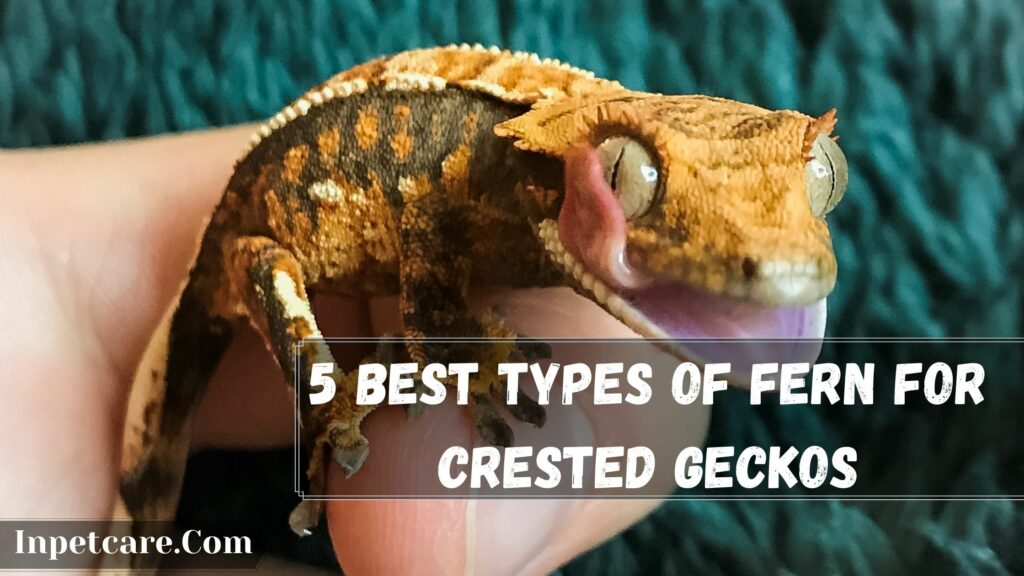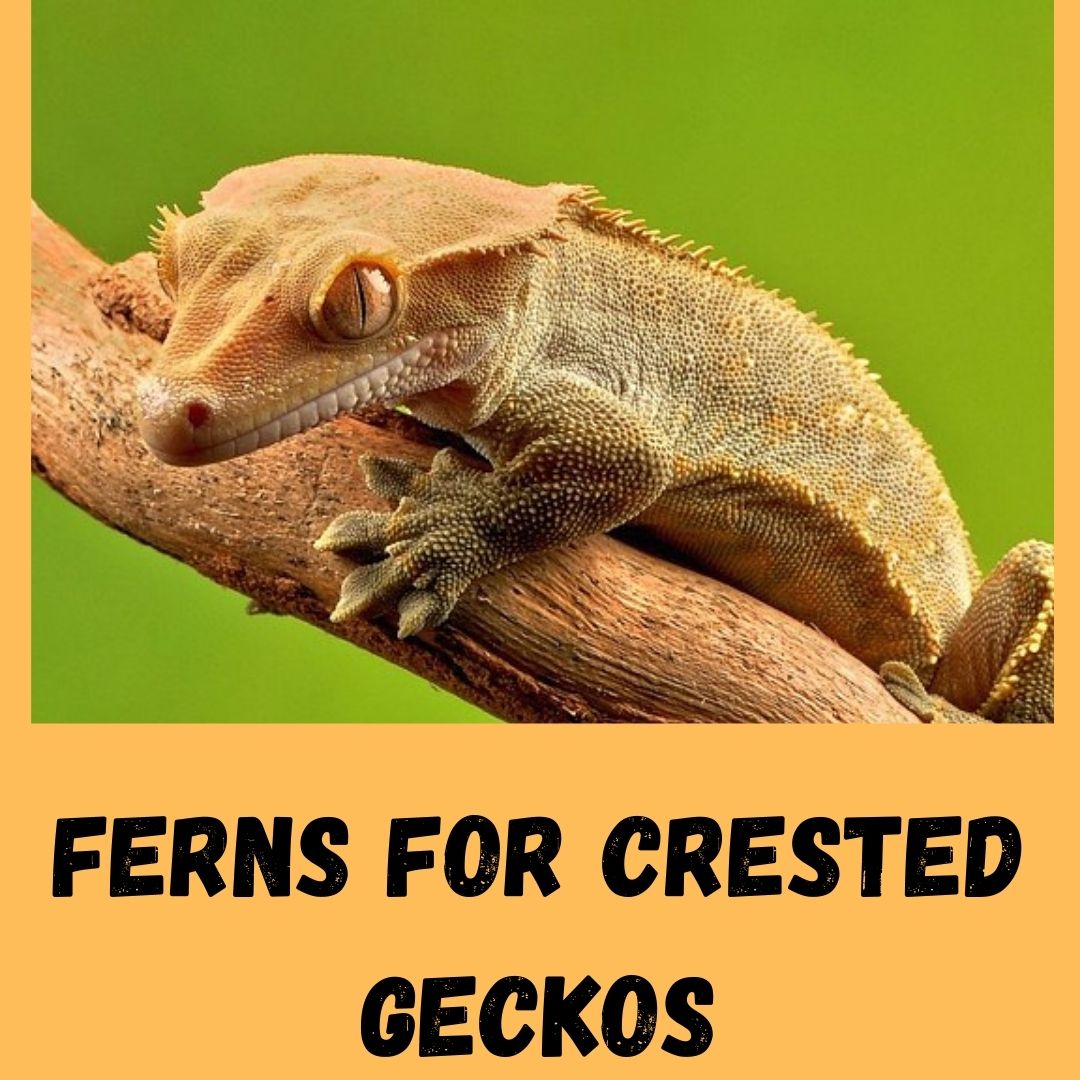Plants are not only important for decorating a crested geckos enclosure but also vital for allowing them to hide when they need to. In this article, we will discuss a typical type of plant popularly known as ferns.
We will understand whether ferns can be kept in a crested geckos enclosure or not. I will also answer the question: are ferns safe for crested geckos? Therefore without wasting another second, let’s look at the best ferns for crested geckos.
Post Contents
Are Ferns Safe For Crested Geckos?

Fern is known for thriving in warm and humid places. Therefore plants are completely safe for crested geckos and a good addition to their vivarium. Ferns like bird nest ferns tend to be one of the best options for your crested gecko to hide in. These plants are not suitable for crested gecko climbing as it forms nest like circles. There are more than 20k known species of fern around The World.
Many of these ferns are suitable for outdoors, but some of its species are best as house plants. When you are looking for a fern, look at the one that is non-toxic and easy to care for. Look at the fronds and their underside for reproductive structures to examine their true colour and texture. The most common and familiar plant that is found all over the world is Pteridium aquilinum. Pteridium aquilinum is also known as a common bracken fern.
Being a low maintenance indoor plant, it is best suited to mimic the natural environment in geckos’ enclosure. It is best grown in the shade when misted with water daily. It is vital to stimulate humid outdoor conditions for your ferns to grow and thrive at best.
5 Best Types Of Fern For Crested Geckos

1. Southern Maidenhair Fern
This specimen needs humid air with enough warmth to support its growth. It’s important to mimic its ideal condition in the enclosure and mist it with water from time to time. It is important to water Southern maidenhair fern for a couple of days. They need proper moisture in their peaceful lives to thrive. They are best grown in indirect light. Consider keeping the enclosure around bright indirect light.
This specimen is known to grow in full shade and prefers moisture. Make sure to have a well raining substrate or soil amended with organic matter that provides all nutrients that the southern maidenhair fern needs. The best way to ensure your plant grows and thrives is to focus on misting.
This specimen needs multiple water sources and is known to be a thirsty specimen. It is important to plant them in moist soil that retains water for longer. It would help if you never allowed its soil to dry out. Otherwise, this Southern maidenhair fern will lose its true colour and texture.
2. Giant Fern (Best Near Cresties Enclosure)
This giant fern may not be suitable for keeping in a crested gecko enclosure but can be placed near it. You can also set this specimen around the room where your crested gecko room. This specimen tends to have a very thick Woody stem with large fronds. They are native to New Zealand and Australia, while the true members of families: are Cyatheaceae and Marattiaceae, but some are from Polypodiaceae.
One of its family members, Cyathea australis, is the tallest fern ever known in the world, which grows up to a height of 65 feet 6 inches with fronds up to 9 feet 9 inches long. The giant fern is also known as Angiopteris evecta, a rare fern that grows in Northern and Eastern Australia.
They are also distributed in the Malay Peninsula. Always keep them in soil fermented with organic matter to support its nutrients requirement. It was always watering the giant fern directly from the center of the plant. Never allow its soil to dry out; otherwise, it will create excessive stress.
3. Bird’s-nest Fern (Recommended)
This is probably one of the best you can ever have for your crested geckos. It is one of the easiest house plants to grow in and decorate any crested gecko vivarium. It can thrive as long as you give it the right condition and care.
This plant is not known for being a tough plant to care for. This specimen always looks for shady conditions. It’s a great starter for any beginner or intermediate person just starting with plants.
Being an indoor plant, bird nest ferns can do surprisingly well when exposed to indirect lighting. It also grows best under artificial light, making them a preferable choice for decoration and hiding. Being non-toxic, it will not cause any health concerns if your crested geckos ingest it. It can grow up to 4 feet in diameter with fonts of 25 feet long.
The bird’s nest fern likes filtered sunlight in warm and humid climates. One best thing about this specimen is that it needs a smaller pot than a larger pot to grow to its best. They can be placed in a smaller pool because they are used to competing, absorbing nutrients from the soil when they grow close to other specimens.
4. Basket Fern
The basket fern looks very beautiful due to its large clump and two different types of fronds. Their shape looks like an oak leaf but is short, papery, and brown. Their fronds are green in color, they can reach up to 2 meters in length when fully erect. Basket ferns like shady areas with filtered sunlight. They are widely distributed in areas with partial sunlight.
They grow best when they receive dappled sunlight most of the day. They can also grow indoors under artificial light observation but are not as good as another fern when getting one kept in a crested geckos enclosure.
However, this specimen makes a wonderful companion and group with other ferns like European ginger, Lamium, wildflowers, variegated forms, sedges, and galium. They can also be paired with ajuga, bergenia, black lilyturf, and barren strawberry.
Interesting Further Reading
- What Size Cage Do Crested Geckos Need? (2022 Review)
- Do Crested Geckos Need A Heat Lamp? or Special Lighting?
- How Do Crested Geckos Drink Water? (2022 Review)
5. Hart’s-tongue Fern
It’s important to consider the care needed by each plant to thrive. Hart’s tongue fern needs water regularly, especially during dry periods. This specimen is known to burn or yellow on hot days or afternoon sun. Thus, it makes them a suitable choice for crested geckos’ enclosure. It would be best if you considered cutting ts frond in early March or late February.
A slow grower, Hart’s tongue fern will need a year to settle in before thriving well. As it has no toxic effects, it is perfectly suited for indoor gardening. You can either have this plant in your crested gecko enclosure or around it where he roams very often. One of the best things about this specimen is that it can grow in any soil as long as it allows proper drainage.
Being medium-sized, they are widely distributed in shady gorges, woodlands banks, and mossy branches. These specimens are also seen on rocks and walls of mountains. It is good for enclosure and suitable for beginners to start gardening. These ferns are grown best in the shade under trees or areas with attractive cover when placed in the garden or farm.
FAQ
Conclusion
Out of all fern options, I would have taken bird nest ferns as it is the most commonly used for reptiles enclosure. Plus, vets recommend adding variety to your vivarium. You should have not only fern but also bamboo.
Here you can know what bamboos are safe for crested geckos. I tried my best to give you all the information about the best ferns for crested geckos. I hope I can provide you with enough ideas around the question: are ferns safe for crested geckos? If you liked our post, share it to help others know what specimen is right and what is wrong for their reptiles.

94% of pet owners say their animal pal makes them smile more than once a day. In 2007, I realized that I was made for saving Animals. My father is a Vet, and I think every pet deserves one. I started this blog, “InPetCare”, in 2019 with my father to enlighten a wider audience.
